How often do you play with your camera?
Doctor and writer Stuart Brown is the founder of the National Institute of Play. He gave a remarkable TED talk on the value of play and it turns out that play is about much more than fun. It’s many benefits include: increased creativity, better problem solving, and even more intimate connections. If deprived of play, both children and adults suffer.
“The opposite of play is not work, it’s depression.” ~ Stuart Brown
Children quite naturally know how to play and usually have the time and space for it. I consider myself lucky that I had a good amount of play in my life as a child. We lived on a cul-de-sac with a school across the street and a forest beside it. Me and my siblings and the neighbourhood kids were free to roam. I had time for solitary play – bouncing a rubber ball in the schoolyard, shooting hoops, and creating scrapbooks. Together with my siblings and friends, we built forts in the woods and played outdoor games – basketball, baseball, hide and seek, hopscotch, and jump rope, to name a few.
Unfortunately, our time for play seems to dwindle as we become adults and take on responsibilities. We have to schedule it. How do you incorporate play into your life? For me, photography is one way. In this article, psychologist Peter Gray cites five characteristics of play. I’ve added how I experience these characteristics through photography.
Play is self-chosen and self-directed.
The element of freedom to choose in play results in joy. For those of us who love photography, I think it’s safe to say that we freely choose to engage in it. We can photograph whatever we like. Nothing is off limits. And, we can quit anytime.
However, there are certain “rules” in photography, there’s a sense of competitiveness and judgments about what makes a “good” photograph. Sometimes we can feel as if we don’t measure up. To keep it fun, we must keep in mind the self-directed part. We can choose not to focus too rigidly on rules. We can be open and receptive to surprise and photograph what lights us up, regardless of what others will think.
I took the image below at a greenhouse where I went to photograph flowers. But I found this reflection of flowers in the metal baseboard to be most interesting.
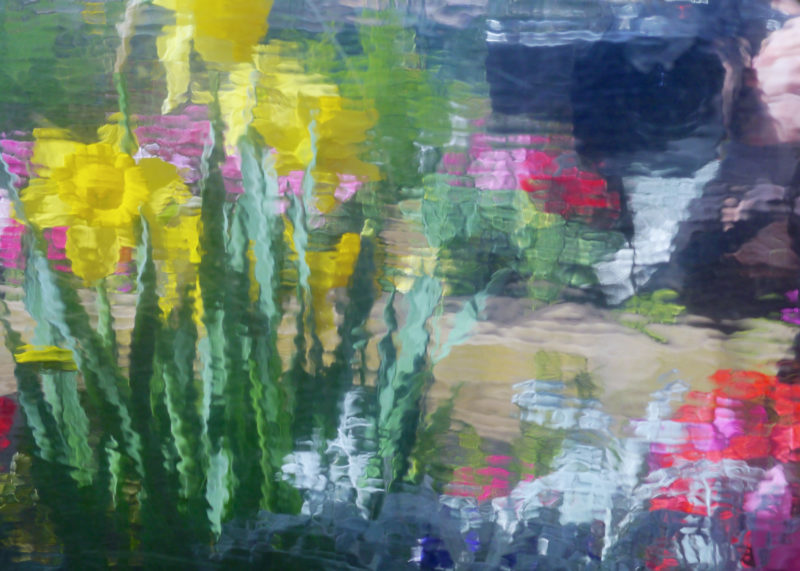
Means are more valued than ends.
Photography loses its sense of play when we’re too focused on the outcome, the picture, rather than the process. When we’re too concerned with creating a “good” photograph, one that others will approve of, the potential for creativity, of unseen possibilities can go way down. Our best photographs will come quite naturally when we photograph for the pleasure of the experience, when we give ourselves free reign to have fun and experiment with different perspectives and possibilities. Many of the resulting images might not work. And, that’s okay.
I love to play with intentional camera movement. Most of the shots don’t turn out but every once in awhile you get a keeper.
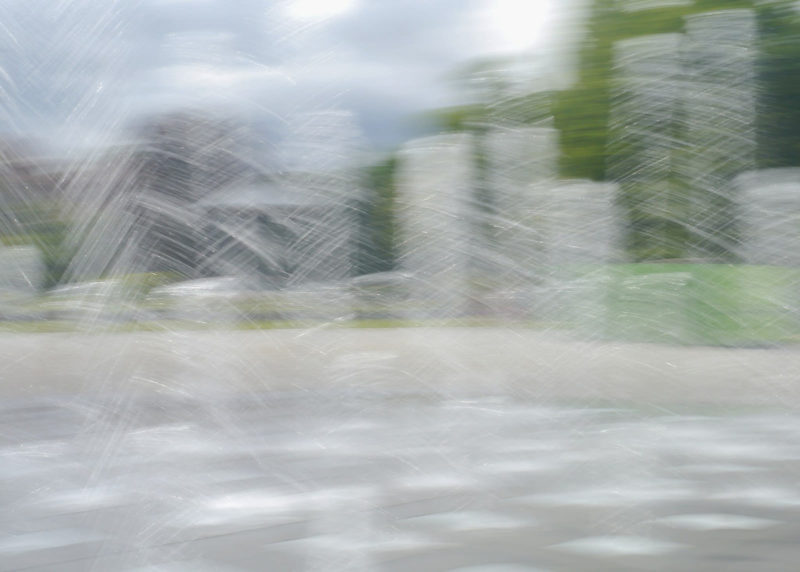
Play has structure, or rules, not dictated by physical necessity but emanating from the minds of the players.
In photography, even when we’re playing, we still have to have some knowledge of how our camera works and how to compose and expose. There are general guidelines for composing visual elements that are useful in knowing how to create an aesthetically pleasing image. But, these guidelines are not set in stone. They can be in the back of our mind while photographing, yet they can always be challenged.
Like the one about everything being sharp. Sometimes intentional blur, for instance, conveys the message better.
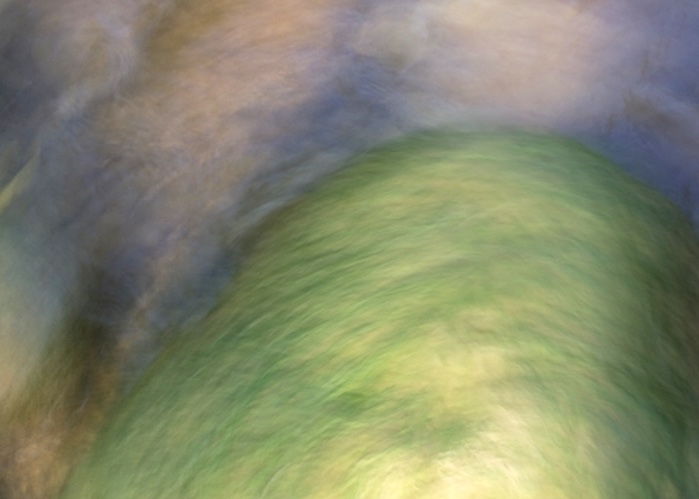
Play is imaginative, non-literal, mentally removed in some way from “real” or “serious” life.
We can even let our imaginations run wild with photography, creating images that are symbolic or metaphorical or represent our emotions. One fun exercise in seeing is to focus on window reflections. Here, you get a picture of everything – the window, the inside, the outside, and often the photographer too. All of life, the 3-D world, is blended together into one 2-D image, creating something other-worldly. Normally, when we look in a window we don’t even see the reflection. We see what’s inside and not the rest because we’re conditioned that way. Going in search of reflections requires a different way of seeing – a more playful one.
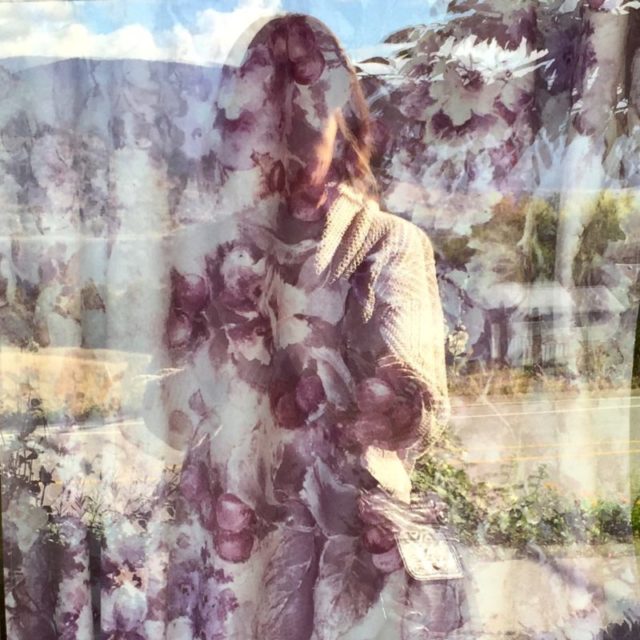
Play involves an active, alert, but non-stressed frame of mind. This mental state is what some researchers call “flow.”
Photography is a way to experience total presence. With our attention attuned to the process of photographing, there is less consciousness of self and more outer awareness. This playful frame of mind is the ideal setting for creativity to flourish and new learning to occur. When we’re photographing, we can get into this very enjoyable flow state, where we’re deeply present and engaged with what’s right in front of us. It enables us to experience wonder and this shows through our photographs. Children show the way.
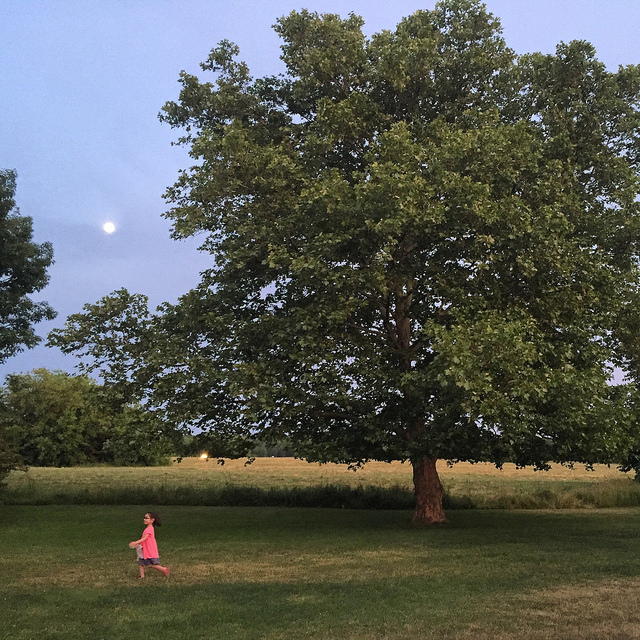
How will you play today?
** Books mentioned have Amazon affiliate links, meaning I make a few cents if you purchase through my link. I only recommend books that I’ve read.
Try my on-demand workshop, Going Abstract, where many of the practices involve play.
I love how you have so clearly expressed the way I intuitively and playfully bring my images to birth ~ always! I particularly love the 3D other worldy image, when I discovered this ability by accident some years ago I became hooked! I became enthralled by the experience, it took me to the most beautiful places without the need to layer in Photoshop! Thank you.
Whoops! Clicked too quick, I meant worldly!